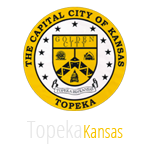The City of Topeka Utilities Department has completed the Lead Service Line Inventory (LSLI) required by U.S. EPA’s Lead and Copper Rule Revisions (LCRR) for its water systems.
Under the Lead and Copper Rule Revisions (LCRR), water systems are required to make their initial inventories publicly accessible. The inventory map is available on the City of Topeka Utilities webpage under “Topeka’s LCRI Compliance”.
Through completing a historical records review, conducting surveys and performing field checks, the City determined there are 291 lead service lines in its distribution system, 810 galvanized lines requiring replacement (GRR), and 3,112 lines that are made of unknown material. These numbers include both
city-owned and customer-owned service lines. The remaining 53,592 service lines in the distribution system are identified as non-lead.
“We are proud to be part of the national effort to better protect communities from exposure to lead in drinking water,” said Utilities Director Sylvia Davis.
City of Topeka Utilities prepared the LSLI for submittal to the Kansas Department of Health and Environment (KDHE) and US Environmental Protection Agency (EPA).
Over the next three years, Utilities plans to continue work to identify the remaining unknown service lines. Simultaneously, plans will begin to replace the City’s lead service lines and the GRR.
About the LCRI The EPA first established the Lead and Copper Rule in 1991 to reduce exposure to lead and copper in water. These contaminants primarily enter drinking water through corrosion of service lines, fixtures, or plumbing. EPA published Lead and Copper Rule Revisions (LCRR) in 2021 and proposed Lead and Copper Rule Improvements (LCRI) in 2023 to strengthen key elements of the LCRR. The final rule was approved on October 8, 2024.
